Comparing Spiral Freezers and Tunnel Freezers for Food Processing Efficiency
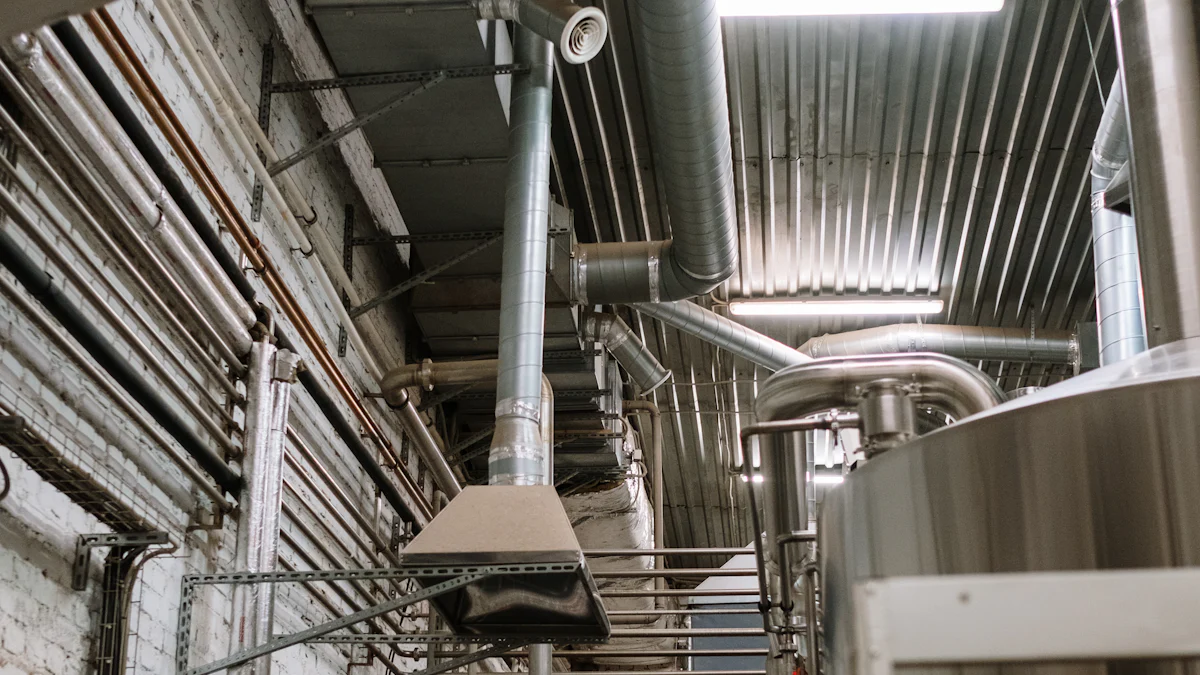
Choosing the right freezing technology plays a vital role in ensuring food processing efficiency. The type of freezer you select directly impacts product quality, energy consumption, and operational costs. For instance, a Spiral Freezer offers compact design and consistent freezing, making it ideal for high-volume production lines. On the other hand, different freezing systems cater to specific needs, such as rapid freezing for large food items or delicate handling for individual products. Understanding these differences helps you make informed decisions tailored to your production requirements.
Efficiency and Throughput
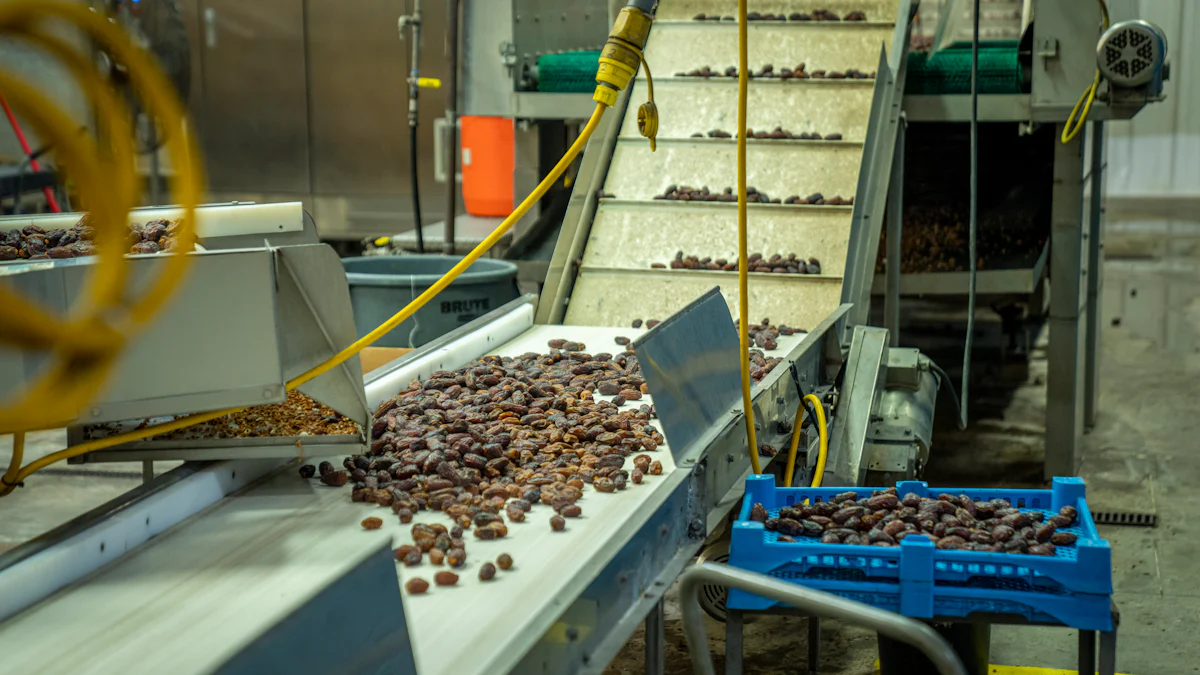
Operational Efficiency of Spiral Freezers
Spiral freezers excel in delivering operational efficiency, especially for high-volume food production. These freezers are designed to handle large quantities of food while maintaining consistent freezing quality. Their compact design allows you to maximize space without compromising performance. Unlike traditional freezers, spiral freezers utilize a continuous freezing system that ensures uniform exposure to cold air. This feature reduces freezing time and enhances productivity.
The advanced airflow management in spiral freezers contributes to their efficiency. By evenly distributing cold air, these freezers achieve faster and more uniform freezing. This makes them ideal for industries like seafood processing, where maintaining product quality is critical. Additionally, the ability to process a wide range of products, from seafood to baked goods, highlights their versatility in food production.
Operational Efficiency of Tunnel Freezers
Tunnel freezers, on the other hand, are designed for rapid freezing of individual items or large food products. These freezers operate by moving products through a linear freezing tunnel, ensuring quick and efficient freezing. Tunnel freezers are particularly effective for IQF freezer applications, where individual quick freezing is essential to preserve the texture and quality of food items.
While tunnel freezers require more space compared to spiral freezers, they offer high throughput for specific applications. Their straightforward design makes them suitable for freezing large batches of uniform products. This efficiency makes tunnel freezers a preferred choice for industries focusing on bulk production, such as frozen vegetables or meat processing.
Energy Consumption in Spiral Freezers
Spiral freezers are known for their energy efficiency, making them a cost-effective choice for long-term operations. Recent innovations in spiral freezer technology have significantly reduced energy consumption. Features like advanced monitoring systems and optimized airflow management help you save energy while maintaining high freezing capacity. These improvements not only lower operational costs but also contribute to environmental sustainability.
Compared to traditional freezers, spiral freezers consume less energy due to their compact design and efficient freezing process. The continuous freezing system minimizes energy waste by maintaining consistent temperatures throughout the freezing cycle. This makes spiral freezers an excellent investment for businesses aiming to balance efficiency with energy savings.
Energy Consumption in Tunnel Freezers
Tunnel freezers are engineered to deliver rapid freezing while maintaining energy efficiency. These systems use advanced designs to optimize energy consumption, making them a practical choice for high-volume food production. By employing linear freezing tunnels, tunnel freezers ensure quick freezing, which reduces the time products spend in the freezing process. This efficiency not only preserves food quality but also minimizes energy waste.
Modern tunnel freezers incorporate innovative technologies like cryogenic freezing. This method uses extremely low temperatures to freeze products faster, which significantly lowers utility bills. Cryogenic tunnel freezers also enhance operational efficiency by reducing freezing times. These features make them a cost-effective solution for food producers aiming to balance throughput with energy savings.
Sustainability trends in the tunnel freezer market have led to the adoption of natural refrigerants and energy-efficient designs. These advancements address the challenges of high energy consumption while improving environmental impact. For example, recycling measures and optimized airflow systems help reduce energy usage without compromising freezing performance. These improvements ensure that tunnel freezers remain a reliable option for industries requiring rapid and consistent freezing.
Despite their energy-saving features, tunnel freezers consume more energy compared to spiral freezers due to their rapid freezing capabilities. However, their ability to handle large volumes of food efficiently offsets this drawback. Industries focusing on bulk production, such as frozen vegetables or meat processing, benefit greatly from the high throughput offered by tunnel freezers.
Space and Footprint
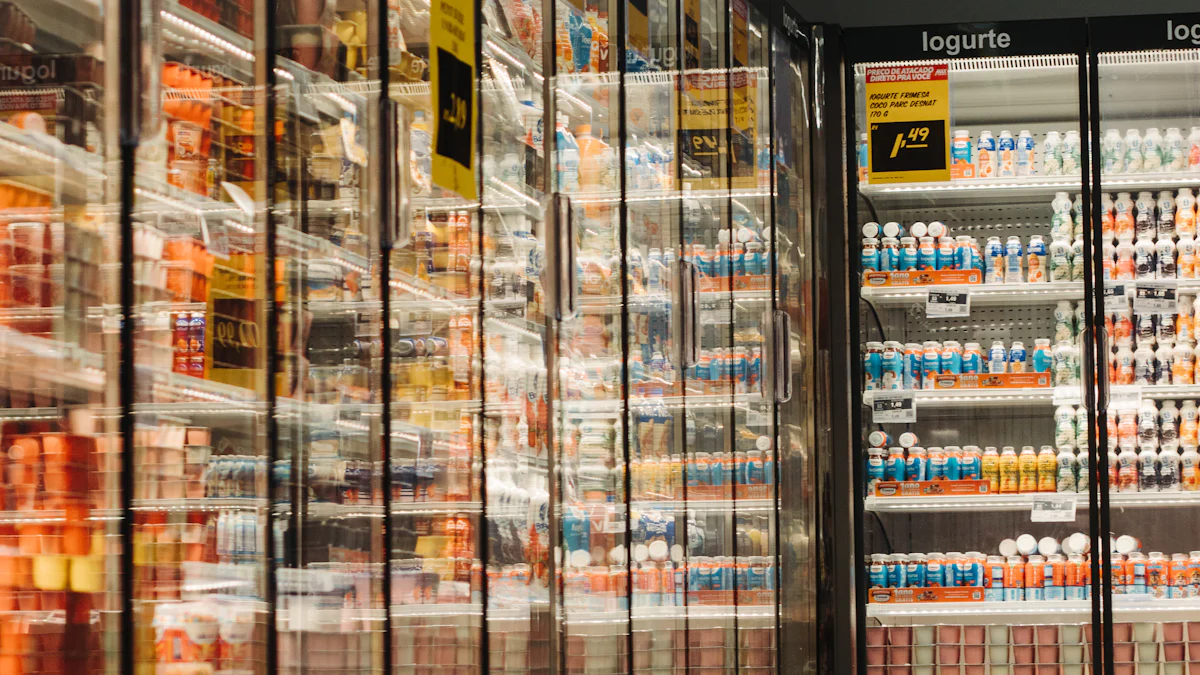
Compact Design of Spiral Freezers
Spiral freezers are engineered to maximize freezing capacity while occupying minimal space. Their innovative spiral conveyor system allows you to freeze large quantities of food within a compact footprint. This design makes spiral freezers an excellent choice for facilities where space is limited but production demands remain high. By utilizing vertical space efficiently, these freezers ensure that you can maintain high throughput without requiring extensive floor area.
The compact design of spiral freezers also simplifies integration into existing production lines. Whether you process meat, poultry, pastries, or other prepared foods, these freezers adapt seamlessly to your facility’s layout. Their ability to deliver consistent freezing in a small space sets them apart from traditional freezers, which often require significantly more room to achieve similar results.
Space Requirements for Tunnel Freezers
Tunnel freezers, in contrast, demand more floor space due to their linear design. These freezers operate by moving products through a straight freezing tunnel, which requires a larger footprint compared to the spiral configuration. If your facility has ample space, a tunnel freezer may suit your needs, especially for applications requiring rapid freezing of individual items or bulk products.
However, the larger space requirement of tunnel freezers can pose challenges for facilities with limited room. You may need to allocate additional resources for layout adjustments or expansions to accommodate these freezers. Despite this, their high throughput and efficiency make them a valuable option for industries focused on bulk production, such as frozen vegetables or meat processing.
Facility Layout Considerations for Spiral Freezers
When planning your facility layout, spiral freezers offer significant advantages. Their compact footprint allows you to optimize space usage, making them ideal for facilities with tight spatial constraints. You can position these freezers in areas where traditional freezers might not fit, ensuring efficient use of every square foot.
Spiral freezers also simplify workflow management. Their vertical design minimizes disruptions to production lines, enabling smooth transitions between freezing and other processing stages. Additionally, their adaptability to various facility layouts ensures that you can maintain operational efficiency without extensive modifications to your existing setup.
By choosing a spiral freezer, you gain the flexibility to maximize production capacity while preserving valuable floor space. This makes them a practical solution for businesses aiming to balance efficiency with space optimization.
Facility Layout Considerations for Tunnel Freezers
When planning your facility layout, you must account for the significant space requirements of a tunnel freezer. These freezers feature a long, narrow structure that relies on a conveyor belt or trays to transport products through a controlled freezing zone. This design ensures rapid and uniform freezing, but it also demands a larger footprint compared to other freezing systems.
To integrate a tunnel freezer effectively, you need to allocate roughly twice the space required by a batch-style freezer with the same capacity. This makes tunnel freezers better suited for facilities with ample floor space. Their linear configuration can stretch across production areas, so careful planning is essential to avoid workflow disruptions. Positioning the freezer in a way that aligns with your production line will help maintain efficiency.
Tunnel freezers are often custom-built to fit the needs of a specific product line. This specialization enhances freezing performance but limits flexibility. If your facility processes a single product type in high volumes, a tunnel freezer becomes an excellent choice. However, for facilities handling diverse products, this limitation may require additional equipment or adjustments to your layout.
To optimize your layout, consider the freezer's entry and exit points. Aligning these with other processing equipment minimizes product handling and reduces bottlenecks. Additionally, ensure that the surrounding area accommodates maintenance and cleaning activities. Proper spacing around the freezer allows technicians to access critical components without disrupting operations.
Product Quality
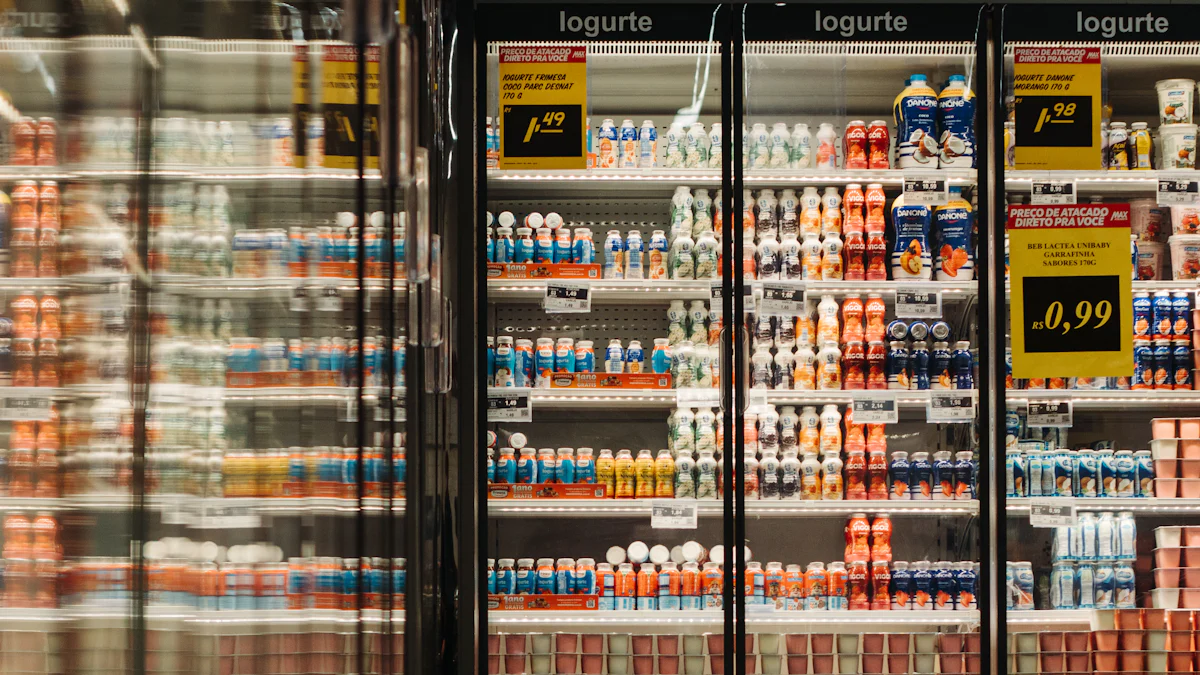
Freezing Consistency in Spiral Freezers
Spiral freezers excel in delivering consistent freezing results, ensuring that every product maintains its quality throughout the process. These freezers use advanced airflow management to distribute cold air evenly across all items. This uniform exposure prevents uneven freezing, which can compromise the texture and taste of food. Whether you are processing seafood, vegetables, or ready-to-eat meals, spiral freezers guarantee high freezing quality.
The design of spiral freezers allows for continuous freezing, which minimizes temperature fluctuations. This stability is crucial for preserving the natural characteristics of food, especially for high-value products like fish and meat. Additionally, the controlled freezing environment reduces the risk of ice crystal formation, which can damage the structure of delicate foods. By using a spiral freezer, you can maintain product quality while achieving efficient freezing.
Freezing Consistency in Tunnel Freezers
Tunnel freezers also deliver reliable freezing consistency, particularly for individual quick freezing (IQF) applications. These freezers operate by moving products through a linear freezing tunnel, exposing them to controlled cold air. This method ensures that each item freezes quickly and uniformly, making tunnel freezers ideal for bulk production of frozen vegetables, fruits, and meats.
The rapid freezing process in tunnel freezers helps preserve the texture and appearance of food. By freezing items individually, these freezers prevent clumping, which is essential for IQF freezer applications. However, the linear design may pose challenges when freezing products with varying sizes or shapes. Despite this, tunnel freezers remain a dependable choice for industries requiring consistent and rapid freezing.
Impact of Spiral Freezers on Food Texture and Taste
Spiral freezers play a significant role in preserving the texture and taste of food. Their advanced freezing technology minimizes ice crystal formation, which helps retain the natural structure of food products. This feature is particularly beneficial for delicate items like seafood and certain fruits, where texture is a critical quality factor.
The continuous freezing process in spiral freezers ensures that food retains its original flavor. By freezing items quickly and evenly, these freezers prevent moisture loss, which can alter the taste of food. For example, frozen meats processed in a spiral freezer maintain their juiciness and tenderness, enhancing the overall eating experience.
Spiral freezers also help preserve the natural color and nutrients of food. This makes them an excellent choice for high-value frozen products, such as premium vegetables and ready-to-eat meals. By investing in a spiral freezer, you can ensure that your products meet the highest standards of quality and taste.
Impact of Tunnel Freezers on Food Texture and Taste
Tunnel freezers excel in preserving the texture and taste of food by utilizing rapid freezing techniques. This quick freezing process minimizes the formation of large ice crystals within the cellular structure of food. Smaller ice crystals help maintain the natural texture of products, ensuring that they remain as close to their original state as possible. For example, frozen fruits and vegetables retain their firmness and crunch, while meats preserve their tenderness and juiciness.
The controlled freezing environment in tunnel freezers plays a crucial role in maintaining food quality. By exposing products to consistent and extremely low temperatures, these freezers prevent moisture loss, which is essential for preserving flavor. Foods processed in tunnel freezers often taste fresher because the rapid freezing locks in their natural flavors and nutrients. This makes tunnel freezers an excellent choice for high-volume production of items like frozen vegetables, fruits, and seafood.
Cryogenic tunnel freezers take this preservation to the next level. These systems use ultra-low temperatures to freeze products almost instantaneously. This method not only enhances the texture and taste but also retains the nutritional value of food. For instance, cryogenically frozen seafood maintains its delicate texture and rich flavor, making it highly appealing to consumers.
Tunnel freezers also excel in individual quick freezing (IQF) applications. By freezing items individually, they prevent clumping, which is especially important for products like berries or shrimp. This ensures that each piece remains separate, making it easier for consumers to handle and use the product. The IQF process further enhances the overall quality and usability of frozen foods.
In addition to preserving texture and taste, tunnel freezers support efficient cold chain logistics. Their rapid freezing capabilities reduce the time food spends in subzero environments, limiting workers' exposure to extreme temperatures. This efficiency ensures that frozen products maintain their quality throughout the supply chain, from production to the consumer's table.
By choosing a tunnel freezer, you can achieve high-quality freezing results for a wide range of products. Whether you process bulk vegetables, delicate seafood, or ready-to-eat meals, tunnel freezers provide the consistency and reliability needed to meet consumer expectations.
Maintenance and Cleaning

Maintenance Requirements for Spiral Freezers
Maintaining a spiral freezer requires attention to its intricate spiral design. You need to conduct regular inspections to ensure the conveyor belt system operates smoothly. The modular design of spiral freezers simplifies this process. You can easily access internal components, making it convenient to identify and address potential issues before they escalate.
To keep the freezer running efficiently, focus on the conveyor belt. Check for wear and tear, as this component plays a critical role in transporting products through the freezing cycle. Lubricate moving parts as needed to prevent mechanical failures. Regularly monitor the airflow system to ensure even distribution of cold air, which is essential for consistent freezing performance.
Spiral freezers also benefit from their design, which minimizes product spillage. This reduces the likelihood of debris accumulating within the system, making maintenance tasks less demanding. By staying proactive with inspections and minor repairs, you can extend the lifespan of your spiral freezer and maintain its high efficiency.
Maintenance Requirements for Tunnel Freezers
Tunnel freezers demand a different approach to maintenance due to their linear structure. You must regularly inspect the conveyor belt or tray system to ensure smooth product movement. Misaligned or damaged belts can disrupt the freezing process and compromise product quality.
Pay close attention to the freezing tunnel itself. Clean and inspect the walls and airflow systems to prevent frost buildup, which can hinder performance. Ensure that the temperature control mechanisms function correctly, as any deviation can affect freezing consistency.
Unlike spiral freezers, tunnel freezers often require more space for maintenance activities. Allocate sufficient room around the equipment to allow technicians easy access to critical components. Routine checks of the refrigeration system, including compressors and evaporators, are essential to maintain optimal performance. By adhering to a strict maintenance schedule, you can ensure that your tunnel freezer operates reliably and efficiently.
Cleaning Processes for Spiral Freezers
Cleaning a spiral freezer is straightforward, thanks to its modular design. The internal components are easy to access, allowing you to perform thorough cleaning without dismantling the entire system. This feature saves time and ensures compliance with hygiene standards.
Start by removing any residual food particles from the conveyor belt. The spiral design minimizes product spillage, so you’ll find fewer contaminants compared to other freezer types. Use food-safe cleaning agents to sanitize the belt and surrounding areas. Pay special attention to corners and crevices where debris might accumulate.
The stainless steel construction of most spiral freezers simplifies the cleaning process. Wipe down surfaces with a damp cloth to remove frost and stains. Regular cleaning not only maintains hygiene but also prevents the buildup of ice, which can affect the freezer’s efficiency. By incorporating these steps into your routine, you can keep your spiral freezer in excellent condition while ensuring food safety.
Cleaning Processes for Tunnel Freezers
Cleaning a tunnel freezer requires a systematic approach to maintain hygiene and ensure optimal performance. The linear design of tunnel freezers simplifies the cleaning process, making it easier for you to access critical components like the conveyor belt and freezing tunnel.
Start by inspecting the conveyor belt system. Remove any food particles or debris that may have accumulated during operation. Use food-safe cleaning agents to sanitize the belt thoroughly. This step prevents contamination and ensures that the products remain safe for consumption. The straightforward structure of the conveyor belt allows you to clean it efficiently without dismantling major parts.
Next, focus on the interior walls of the freezing tunnel. Wipe down the surfaces to remove frost and residue. Pay close attention to corners and hard-to-reach areas where buildup might occur. Regular cleaning of these sections helps maintain consistent airflow, which is essential for uniform freezing. For cryogenic tunnel freezers, ensure that no residual liquid nitrogen or other freezing agents remain in the system after cleaning.
To clean the airflow system, inspect and sanitize the fans and vents. These components play a crucial role in distributing cold air evenly throughout the tunnel. Blocked or dirty vents can reduce efficiency and compromise freezing quality. By keeping these parts clean, you ensure that the freezer operates at peak performance.
Finally, check the drainage system. Clear any blockages to prevent water or frost accumulation. A well-maintained drainage system reduces the risk of ice buildup, which can affect the freezer's efficiency and safety. Ensure that all cleaning activities comply with food safety standards to protect your products and maintain regulatory compliance.
By following these steps, you can keep your tunnel freezer in excellent condition. Regular cleaning not only extends the lifespan of the equipment but also ensures that your products meet the highest quality standards.
Cost Analysis
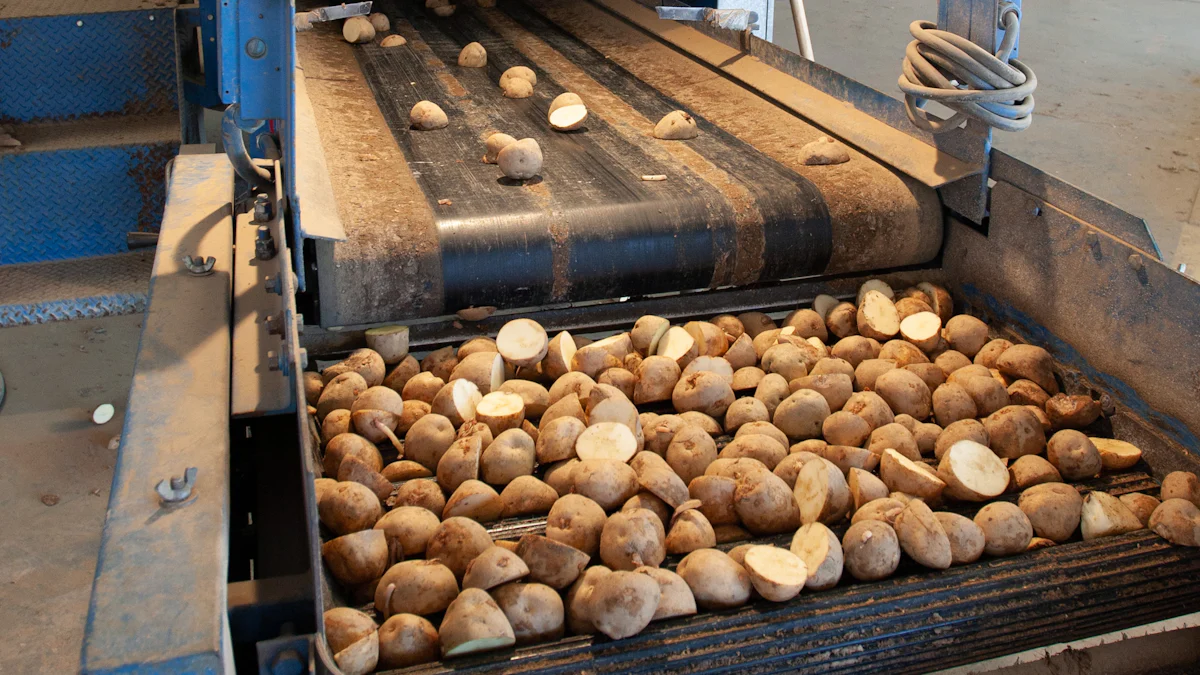
Upfront Costs of Spiral Freezers
Spiral freezers often require a higher initial investment compared to other freezing systems. Their advanced design, which includes a spiral conveyor system and optimized airflow management, contributes to this cost. These features ensure consistent freezing and energy efficiency, making them a valuable long-term asset for food processing facilities. However, the upfront expense can be a significant consideration, especially for businesses with limited budgets.
The compact design of spiral freezers also adds to their cost. Manufacturers incorporate high-quality materials, such as food-grade stainless steel, to ensure durability and compliance with food safety standards. Additionally, the integration of user-friendly control systems and advanced freezing technology further increases the initial price. Despite these costs, the benefits of reduced freezing time and increased throughput make spiral freezers a worthwhile investment for many production lines.
Upfront Costs of Tunnel Freezers
Tunnel freezers, in contrast, typically come with a lower upfront cost. Their straightforward linear design and simpler construction make them more affordable than spiral freezers. This cost advantage makes tunnel freezers an attractive option for businesses seeking cost-efficient freezing solutions without compromising on performance.
The affordability of tunnel freezers does not mean they lack advanced features. Many models include innovative technologies, such as cryogenic freezing, which enhances freezing speed and product quality. These features, combined with their ability to handle high volumes of production, provide excellent value for their price. For facilities with ample space and a focus on bulk production, the lower initial investment of tunnel freezers can be a significant advantage.
Long-Term Costs of Spiral Freezers
While spiral freezers may have a higher upfront cost, their long-term operational expenses are often lower. These freezers are designed for energy efficiency, which helps reduce utility bills over time. The continuous freezing system minimizes energy waste, ensuring consistent temperatures throughout the freezing process. This efficiency not only lowers costs but also supports sustainability goals.
Maintenance costs for spiral freezers are also manageable due to their modular design. Regular inspections and cleaning are straightforward, reducing downtime and repair expenses. The durability of their construction further extends their lifespan, making them a cost-effective choice for long-term use. By investing in a spiral freezer, you can achieve cost-efficient freezing while maintaining high production standards.
Long-Term Costs of Tunnel Freezers
Tunnel freezers offer a cost-effective solution for long-term operations, especially for businesses focused on high-volume production. While their upfront costs may be lower than spiral freezers, their long-term expenses depend on several factors, including energy consumption, maintenance, and operational efficiency.
One of the key advantages of tunnel freezers lies in their durability. These systems are built to handle continuous, large-scale freezing processes, which extends their lifespan. With proper maintenance, you can rely on a tunnel freezer for years without significant performance degradation. This longevity reduces the need for frequent replacements, saving you money over time.
Maintenance costs for tunnel freezers are relatively manageable. Their linear design simplifies inspections and repairs, allowing you to address issues quickly. Regular upkeep, such as cleaning the conveyor belt and airflow systems, ensures consistent performance and minimizes downtime. By adhering to a maintenance schedule, you can avoid costly repairs and prolong the equipment's efficiency.
Energy consumption is another factor to consider. Tunnel freezers are designed to freeze products rapidly, which can lead to higher energy usage compared to spiral freezers. However, modern tunnel freezers incorporate energy-efficient technologies, such as optimized airflow systems and cryogenic freezing methods. These innovations help reduce utility bills while maintaining high throughput. If your production line prioritizes speed and volume, the energy costs may be offset by the increased productivity.
For businesses processing uniform products in bulk, tunnel freezers provide excellent value. Their ability to handle large quantities efficiently makes them a practical choice for industries like frozen vegetables or meat processing. Over time, the combination of durability, manageable maintenance, and high throughput ensures that tunnel freezers remain a reliable and cost-effective investment.
Choosing between spiral freezers and tunnel freezers depends on your specific needs. Spiral freezers save space and provide consistent freezing, making them ideal for facilities with limited room. Tunnel freezers, however, excel in rapid freezing and high-volume food production, offering efficiency for bulk operations. Traditional freezers like these cater to diverse requirements, from compact designs to high throughput.
Evaluate factors such as production volume, available space, and budget before deciding. Consulting with a freezer expert ensures you select the best option for your food production goals. Tailoring your choice to your facility’s needs guarantees optimal performance and quality.
See Also
Comparing Spiral And Tunnel Freezers: Costs And Efficiency
Understanding The Distinction Between Tunnel And Spiral Freezers
Selecting Between Tunnel And Spiral Freezers: A Guide

